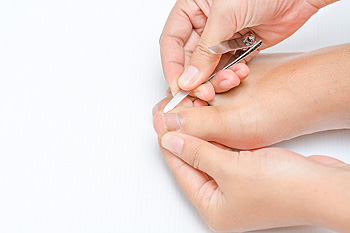
Lansdowne, PA
(610) 626-3338

Lansdowne, PA
(610) 626-3338

Ingrown toenails, a common foot issue, occur when the nail's edge grows into the surrounding skin, leading to redness, swelling, and pain. This condition often affects the big toe and can result from improper nail trimming, wearing tight footwear, or injury. In cases where pain intensifies, or infection signs like pus and increased swelling appear, it is wise to consult a podiatrist. A podiatrist can assess the severity and recommend treatments based on individual needs. They may lift the nail to relieve pressure, or in more severe cases, remove part of the nail to prevent further issues. They might also suggest preventive measures, such as proper nail-cutting techniques, footwear advice, and orthotics if foot structure contributes to the problem. If you suffer from an ingrown toenail, it is suggested that you get prompt podiatric care to alleviate pain and help prevent recurring ingrown nails and potential infections.
Ingrown toenails may initially present themselves as a minor discomfort, but they may progress into an infection in the skin without proper treatment. For more information about ingrown toenails, contact Dr. George Yarnell of Pennsylvania. Our doctor can provide the care you need to keep you pain-free and on your feet.
Ingrown Toenails
Ingrown toenails are caused when the corner or side of a toenail grows into the soft flesh surrounding it. They often result in redness, swelling, pain, and in some cases, infection. This condition typically affects the big toe and may recur if it is not treated properly.
Causes
You are more likely to develop an ingrown toenail if you are obese, have diabetes, arthritis, or have any fungal infection in your nails. Additionally, people who have foot or toe deformities are at a higher risk of developing an ingrown toenail.
Symptoms
Some symptoms of ingrown toenails are redness, swelling, and pain. In rare cases, there may be a yellowish drainage coming from the nail.
Treatment
Ignoring an ingrown toenail can have serious complications. Infections of the nail border can progress to a deeper soft-tissue infection, which can then turn into a bone infection. You should always speak with your podiatrist if you suspect you have an ingrown toenail, especially if you have diabetes or poor circulation.
If you have any questions, please feel free to contact our office located in Lansdowne, PA . We offer the newest diagnostic and treatment technologies for all your foot care needs.